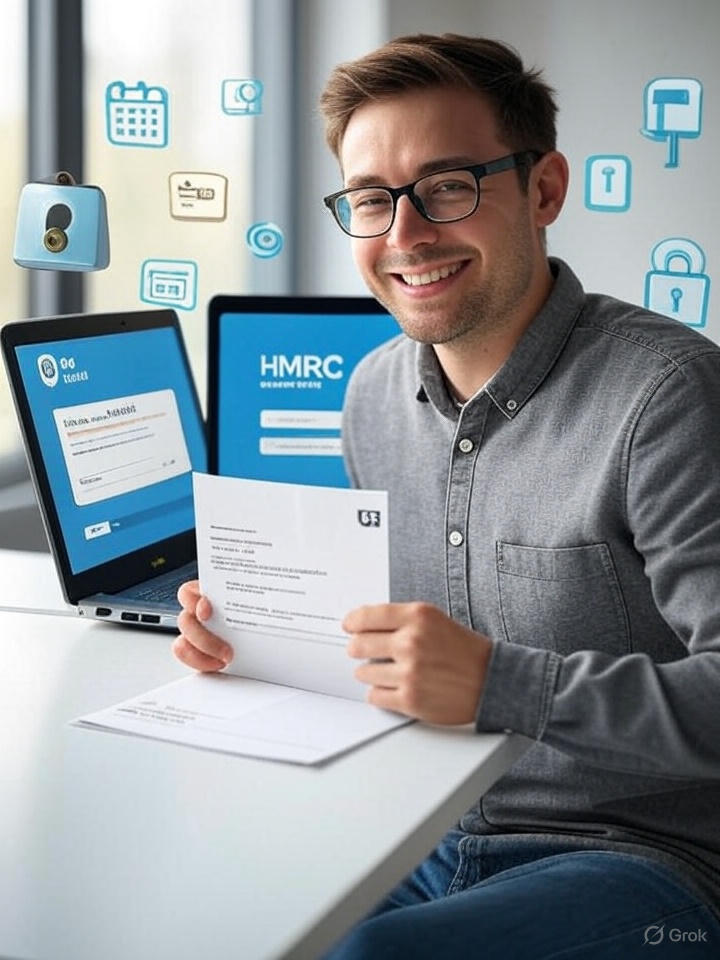The world of freelancing and gig work in the UK brings immense freedom and flexibility, but it also comes with its own set of administrative responsibilities, particularly when it comes to tax. One of the most fundamental pieces of information you’ll need as a self-employed individual is your Unique Taxpayer Reference (UTR) number.
If you’re new to self-employment, the UTR might seem like another piece of jargon. But don’t worry, this guide will demystify it for you, explaining what it is, why it’s so important, and how you can get or find yours.
What Exactly is a UTR Number?
Your UTR number is a unique 10-digit code issued by HM Revenue & Customs (HMRC) to identify you as a taxpayer. Think of it as your personal tax identification number for self-assessment. Every individual or business that needs to complete a Self Assessment tax return will have one.
It’s specific to you and your tax affairs, ensuring that HMRC can accurately track your income, expenses, and tax payments. Your UTR is distinct from your National Insurance Number (NINo), which is primarily for employment and benefits.
Why is Your UTR So Crucial for UK Freelancers?
For UK freelancers and gig workers, your UTR number is the cornerstone of your tax obligations. You’ll need it for several critical tasks:
- Registering for Self Assessment: When you first tell HMRC you’re self-employed, they will issue you a UTR number after you register for Self Assessment.
- Completing Your Self Assessment Tax Return: Your UTR is a mandatory field on your annual Self Assessment tax return. Without it, you cannot submit your tax return online or by post.
- Communicating with HMRC: Whenever you need to contact HMRC about your self-employment income, tax, or national insurance contributions, they will almost always ask for your UTR.
- Working with Accountants/Tax Advisers: If you hire an accountant to manage your taxes, your UTR will be one of the first pieces of information they request.
- Applying for Tax Credits or Benefits: In some cases, your UTR might be needed for applications related to your self-employed income.
In short, if you’re earning money outside of a traditional PAYE (Pay As You Earn) employment, your UTR number is your gateway to staying compliant with UK tax law.
How to Get Your UTR Number
You don’t apply for a UTR number directly. Instead, HMRC issues it to you after you register for Self Assessment.
If you haven’t done this yet, the process is:
- Tell HMRC you’re self-employed: You must do this by 5 October in your second tax year of self-employment (e.g., if you started self-employment in the tax year April 2024 – April 2025, you’d need to register by 5 October 2025).
- HMRC sends your UTR: Once you’ve registered, HMRC will send your UTR number to you by post within 10-15 working days. Keep this letter safe!
Important: It’s crucial not to leave registration until the last minute, as you won’t be able to file your tax return without your UTR.
What if You Can’t Find Your UTR Number?
It’s common for freelancers to misplace their UTR letter, especially if they registered a while ago. Don’t panic if you can’t find it! Here’s how to locate it:
- Previous Tax Returns/Correspondence: Check any past Self Assessment tax returns you’ve filed, or any letters you’ve received from HMRC regarding your tax affairs. Your UTR is usually printed prominently on these documents.
- HMRC Online Account: If you have an HMRC online account for Self Assessment, you might be able to find your UTR there. Log in and navigate through your tax details.
- Contact HMRC: If all else fails, you can contact HMRC directly. Be prepared to answer security questions to prove your identity.
- Self Assessment Helpline: 0300 200 3310
- Online Chat: Available through the HMRC website.
- Explain that you’re a self-employed individual and need your UTR. They will verify your identity and can usually provide it over the phone or re-send it by post.
Never share your UTR number publicly or with anyone you don’t trust, as it’s sensitive personal information.
Key Takeaways for UK Freelancers
- Your UTR is a 10-digit number from HMRC for Self Assessment.
- You get it after you register as self-employed.
- You cannot file your tax return without it.
- Keep it safe and know how to find it if you misplace the original letter.
Understanding and knowing where to find your UTR number is a small but vital step in confidently managing your finances as a UK freelancer or gig worker. Ensure you have yours ready well in advance of the tax return deadline!

